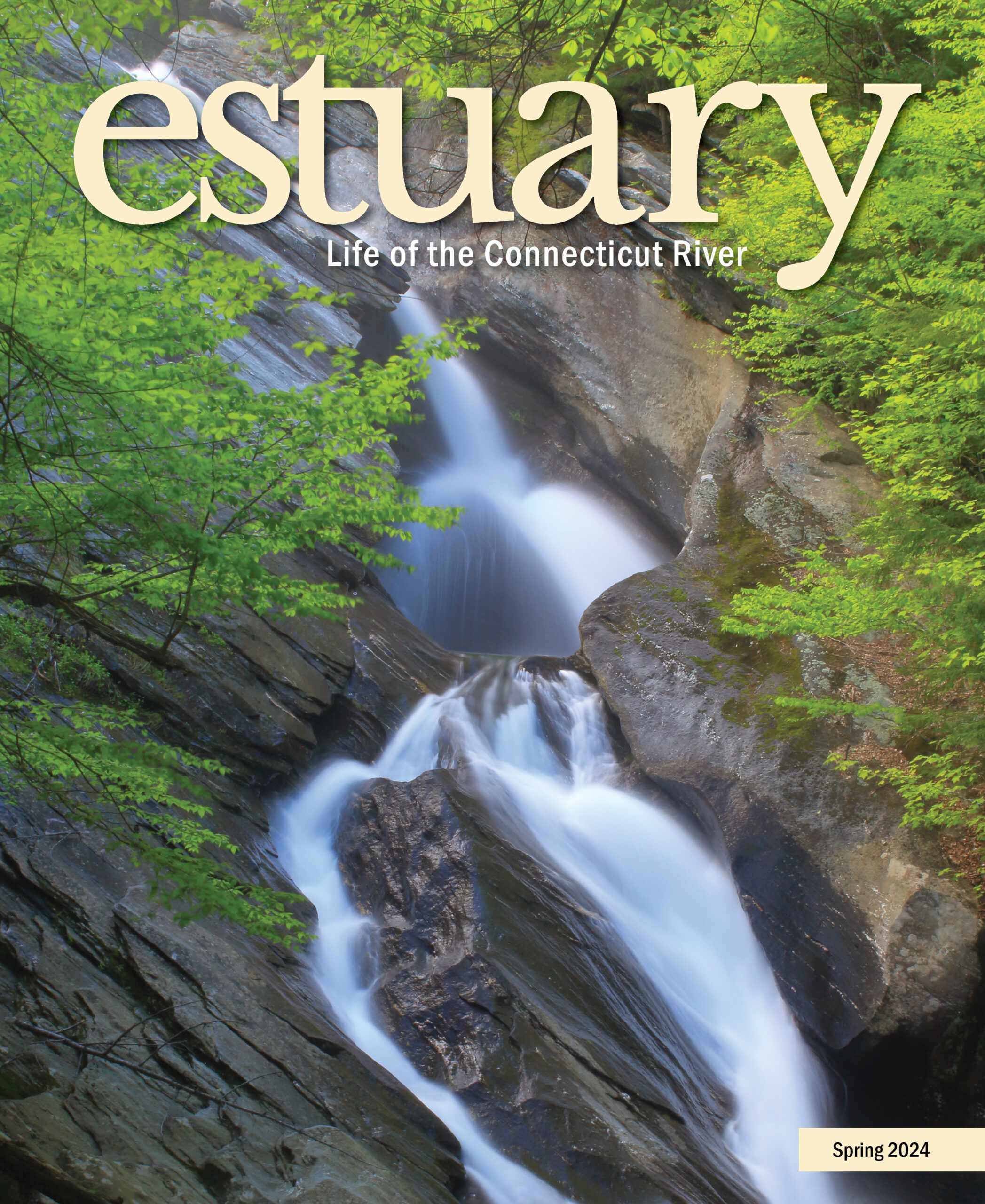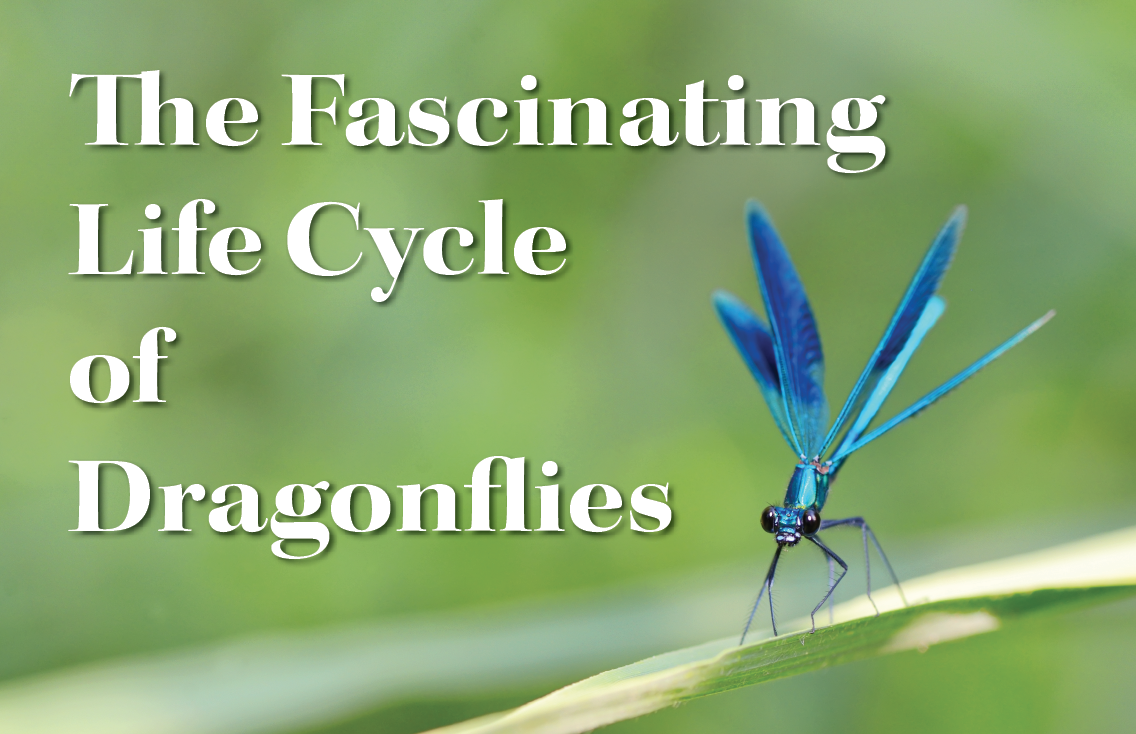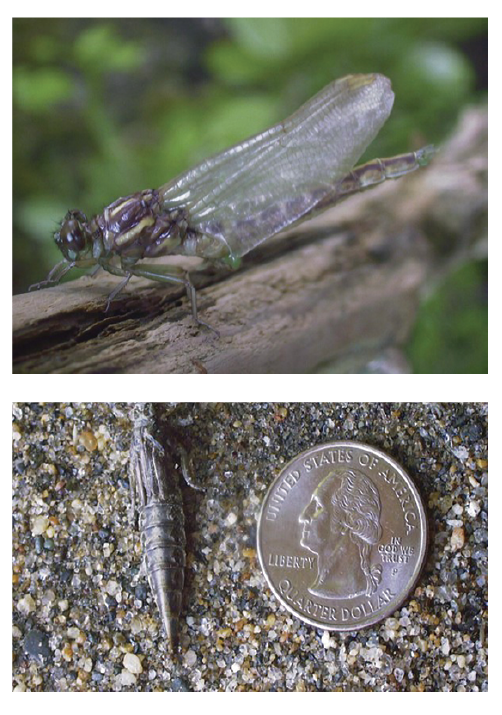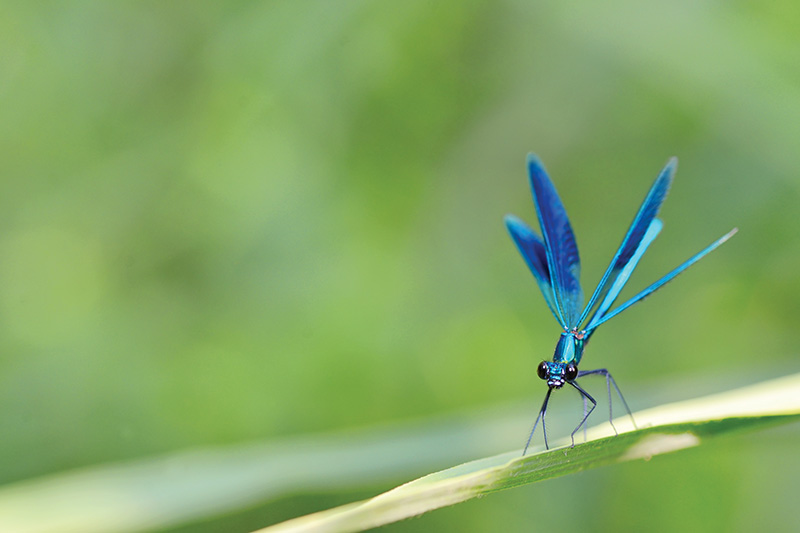 This article appears in the Spring 2024 issue
This article appears in the Spring 2024 issue

By Kirsten Martin
Warm breezes, the shimmer of light reflected off gentle ripples on the surface of a pond, the melodic trill of summer cicadas, and the translucent glimmer of dragonflies as they perform their aerial ballet—all of these images conjure thoughts of summer in New England. For over fifteen years I have been privileged to study and witness moments in the lives of the amazing creatures known as dragonflies.
While most people easily recognize the winged adult form of the insect, the immature nymphal or larval stage is often overlooked. In New England we can enjoy the aerial acrobatics of the adult dragonflies for a few months during the summer. The variety of sizes, colors, and behaviors of the adults are truly outstanding and certainly worthy of discussion, but I suggest that the more muted color palettes of the nymphs are equally worthy of study and appreciation. Dragonfly nymphs can be found year-round if the pond, lake, or stream does not freeze solid over the winter.
Unlike the short flight time of the adults, in New England the nymphal stage lasts anywhere from three to five years. During this time the nymphs only briefly leave their watery home, to “eclose.” Eclosure is the process of shedding the outer skin (exoskeleton) that is necessary for an invertebrate to grow. If you have keen eyesight, you may be able to find these skins (exuviae) clinging to vegetation, rocks, or built structures along the sides of rivers, ponds, lakes, and streams.
Once the nymph emerges from its old skin, the exuviae often remains attached to the substrate. It is amazing how tenacious and durable these skins are. Unless they are damaged by wind or rain, you can often find exuviae that have been shed weeks earlier. If you look closely, you will see a small opening on the back of the head (above the wing pads) where the nymph (or adult dragonfly) has carefully pulled its new body out of the exoskeleton.
Dragonflies play a vital role in helping regulate mosquito populations. They are voracious predators at all stages of their lifecycle, and the nymphal diet is quite varied, including mosquito larvae, tadpoles, small fish, and even other dragonfly nymphs. Dragonflies are, of course, also preyed upon by many species. As nymphs, they are often eaten by fish, frogs, snakes, and small mammals. The likelihood of an individual dragonfly nymph surviving to adulthood is marginal at best.
Dragonfly nymphs are amazingly suited for their specific habitats. As benthic-dwelling (i.e., “living at the bottom”) organisms, their body plan fits the unique substrate characteristics of the habitat. Some species prefer more silty substrates, while others are more frequently found in areas that have sandy substrates. Some species specialize in the stiller water of ponds and lakes, while others prefer faster moving rivers and streams.
Members of the Macromiddae family (River Cruisers) have long legs that allow them to traverse sandy substrates. Several members of the spiniceps (Clubtails) species have narrow abdomens that better enable them to live in larger rivers. Dragonfly nymphs can be well-camouflaged in their environment. Their exoskeletons are a masterpiece of various shades of brown, taupe, black, golden yellow, and even muted russets.
Dragonflies go through incomplete metamorphosis. Unlike butterflies, for example, dragonflies do not have a chrysalis stage. Their life cycle consists of three stages: egg, nymph (or larvae), and adult. There can be several growth stages, called instars, within the nymphal stage. It is still unclear why there is so much variation in the number and duration of instars for different species.
In my work I focus on the behavioral components of a dragonfly’s life, both as adults but mostly during the nymphal emergence and eclosure stage. It takes a tremendous amount of patience and persistence to witness this incredible moment in a dragonfly’s life.

Top: The pearlescent wings are a mark of a newly emerged teneral; this opalescence fades after about 15–20 minutes. The color on the body will also become more vibrant by the end of the teneral stage.
Bottom: A nymph that has emerged from the Connecticut River and is beginning its eclosure process.
Very little is known about species-specific emergence and eclosure behavior. Population emergence appears to vary from year to year—something I have documented. One year, on a single sandy riverbank along the Connecticut River in northern Connecticut, I witnessed over 100 clubtail dragonflies emerge from the river, eclose, then fly across the river. This all happened within the span of forty minutes. If I had not been at that exact spot on that specific riverbank at that time, I would have missed the event.
Based on my observations, species do seem to vary in their preference for the site in which they emerge or eclose. I have never found (or witnessed), for example, Stygian shadowdragon nymphs eclosing in the same types of habitats as Cobra Clubtails or Arrow Clubtails. I have always found Shadowdragon nymphs (or their exuviae) along shorelines with a lot of overhanging vegetation and mucky or silty substrates, whereas the two clubtail species I’ve usually found along shorelines with less overhanging vegetation and sandier substrates. The timing of emergence and eclosure varies by species, too. Some emerge early in the spring and have a short emergence season, while others emerge later in the summer and can be found emerging for a longer period. Some species, like the Stygian shadowdragon, emerge very early in the morning, while others seem to emerge in the early-to-midafternoon.
While the immature stage of a dragonfly’s life may not be as bright and colorful as the winged adults, it is certainly worthy of appreciation. So this spring, once the snow and ice retreats, venture out to your local waterway and embark on a treasure hunt for these elusive creatures. If you are lucky enough to be in the right spot at the right time, you will bear witness to one of the many miracles that can be found in nature. Enjoy the exploration, and remember that dragons still walk (and fly) amongst us!
Kirsten Martin, PhD, is Associate Professor of Biology at St. Joseph University in West Hartford, Connecticut.
Image Credits: Getty Images/mady70 (blue dragonfly). Kirsten Martin (young dragonflies).

